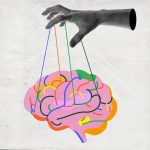EdTech plays a vital role in education these days as it enhances the learning experiences for students, promotes collaborations, provides personalised learning, empowers educators, and prepares students for the future.
The main focus of EdTech is to provide an environment of learning that is more engaging, inclusive, and consists of the latest technology for a personalised experience. It is through the cloud component of EdTech that schools are now able to achieve Unesco’s Sustainable Development Goal 4 which is to ensure inclusive and equitable quality education, promoting lifelong learning opportunities for all by 2030.
Personalised Learning
EdTech now has the potential to create personalised learning experiences, catering to the individual needs and interests of students. It allows educators to break free from the constraints of a one-size-fits all approach and empowers students to take ownership of their education. This personalised approach is one of the key elements that sets EdTech apart from traditional education methods.
In today’s digital age, education technology has opened up new possibilities for interactive and engaging learning experiences. Through digital platforms, students can access a wide range of educational resources, including multimedia content, interactive simulations, and virtual reality experiences. These tools enable students to explore complex concepts in a hands-on manner, promoting deeper understanding and critical thinking skills. By tailoring the learning experience to individual needs, EdTech encourages students to become active participants in their education journey, fostering them to create a sense of autonomy and motivation.
Accessibility and Universal Design
One of the significant advantages of EdTech is its ability to break down geographical and socio-economic barriers, creating opportunities for students who may have limited access to quality education. Through online learning platforms, students can access educational materials from anywhere in the world. This is particularly beneficial for students in remote areas or for those facing mobility challenges. EdTech tools can be designed with accessibility in mind, ensuring that all learners have equal access to educational resources and opportunities. Features such as closed captions, screen readers, text-to-speech, and customisable font sizes make content more accessible for students with visual or hearing impairments.
In 2021, Microsoft introduced new technological tools and updates designed to support the 5 key areas educators require to create a holistic learning environment and move education forward: student centricity, skills focus, social learning, safety, security and scalability. In 2024, Microsoft built additional applications with assistive technologies and accessibility settings on most devices to foster a learning environment where all students and teachers feel included and have the tools and resources they need to succeed.

Cultivating Cultural Awareness and Diversity
EdTech can also expose students to diverse cultures, perspectives, and experiences, fostering cultural awareness and inclusivity. Through virtual field trips, immersive simulations, and multimedia resources, students can explore different cultures, historical events, and global issues. This exposure helps develop empathy, understanding, and respect for diverse communities, promoting a more inclusive and tolerant society.
It has the power to transform education and promote inclusivity by providing personalised learning experiences, enhancing accessibility, facilitating collaboration and communication, supporting students with special needs, breaking geographical barriers, and cultivating cultural awareness. By leveraging the benefits of EdTech tools and resources, educators can create a more inclusive learning environment that caters to the diverse needs and abilities of all students. Embracing EdTech is a significant step towards bridging the gap and ensuring that every learner has equal opportunities to succeed and thrive in the educational journey.









